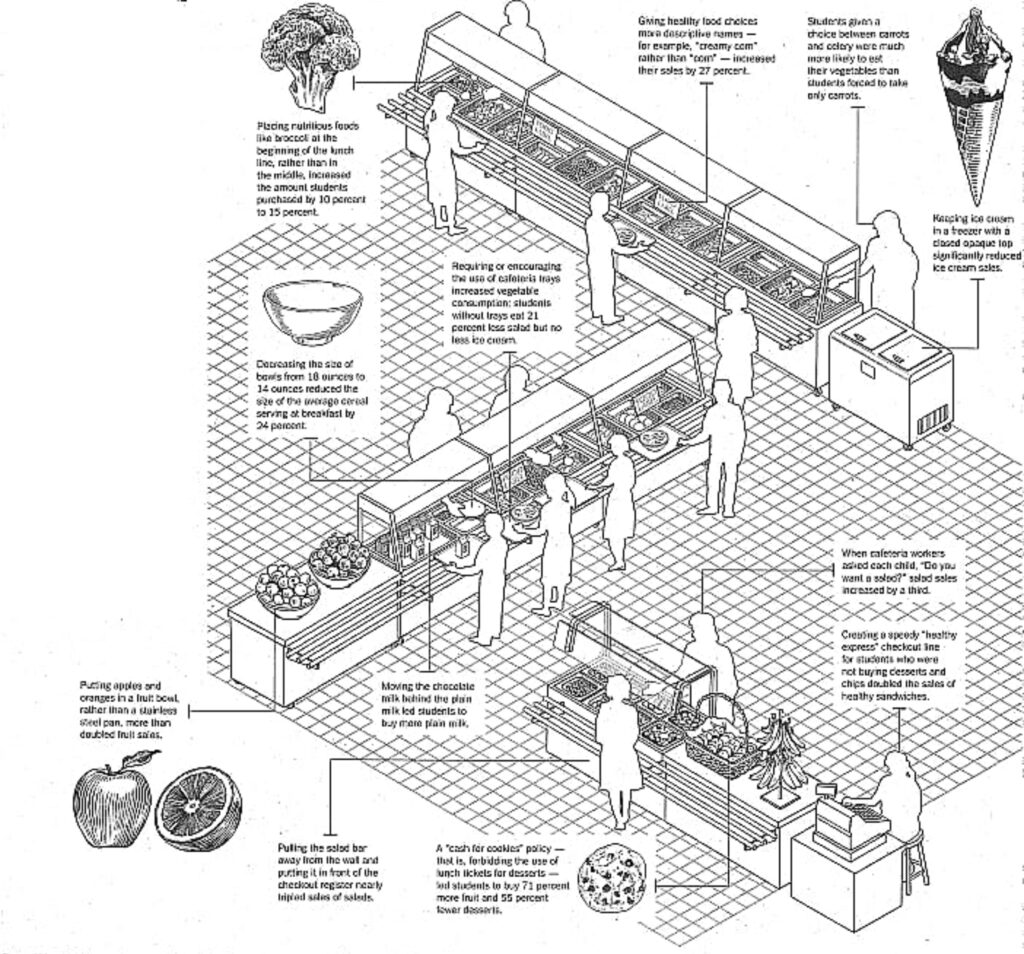| Location | Ithaca, New York, USA |
| Consulting Agency | Cornell Food and Brand Lab |
| Date | 2007-present |
| End User | 30 000 students |
| Client | Plattsburgh High School; 1500 other schools |
| Research Leads | David Just, Brian Wansink |
| Additional Support | Collin Payne (researcher), Lisa Mancino (researcher), Sandra Cuellar (school relations coordinator), Mitsuru Shimizu (analyst), Elaine Hill (analyst), and Laura Smith (operations manager) |
| Funder | US Department of Agricutlure |
| Cost | $34 USD per school |
Self-proclaimed “stealth health” leader Brian Wansink describes the Smarter Lunch Rooms initiative as “choice architecture.” Through seemingly insignificant design changes, the initiative “leads a person to take an apple instead of taking a cookie, all the while letting them think that their own volition led them to do so,” says Wansink, a professor at Cornell University in the Food and Brand Lab.

Another cartoon depicts teenage eating habits. Image: Brian Wansink/Just & Wansick

Smarter Lunch Room features cartoons on the Web. Image: Brian Wansink/Smarter Lunch Rooms
In 2006, Wansink published Mindless Eating. The book, stemming from 20 years of research, made revealing correlations between food consumption and food marketing and placement. It concludes that packages and containers, labels and lights, colors and shapes, distractions and distances—in short, design— influence people’s eating choices in restaurants, supermarkets, and even at home, more than they realize.
When he took a leave of absence from Cornell to serve as executive director of the US Department of Agriculture’s Center for Nutrition Policy and Promotion in 2006, Wansink applied the same product placement methodology that companies use to sell unhealthy choices to selling healthier options in school lunchrooms. The lunchroom redesign focuses on rearranging, relocating and renaming foods with the aim of directing students to healthier choices. Changes vary from locating the vegetables to the front of the buffet line, to hiding the chocolate milk behind the skim milk, and placing ice cream in the freezer with opaque covered lids. “It has to be a low-cost, no-cost change, and no change can cost more than $50,” Wansink says. “If it costs more than $50, we go back to the drawing board.”
Plattsburgh High School in upstate New York was one of the first schools to implement cafeteria changes as part of the Healthy People 2020 Project pilot program. In December 2009, the school bought 175 fruits per month from distributors, based on demand. By March, after the changes were made, the school purchased 1067 whole fruits per month to meet the increased demand.
In addition to schools, Wansink is working with corporate lunchrooms and the US military to recreate environments that promote healthy choices. Since the program started in 2007, about 1500 schools in the United States have incorporated healthy lunchrooms.

A diagram shows the methodology behind Smarter Lunch Rooms. Image: Joe McKendry















READ OR LEAVE A COMMENT